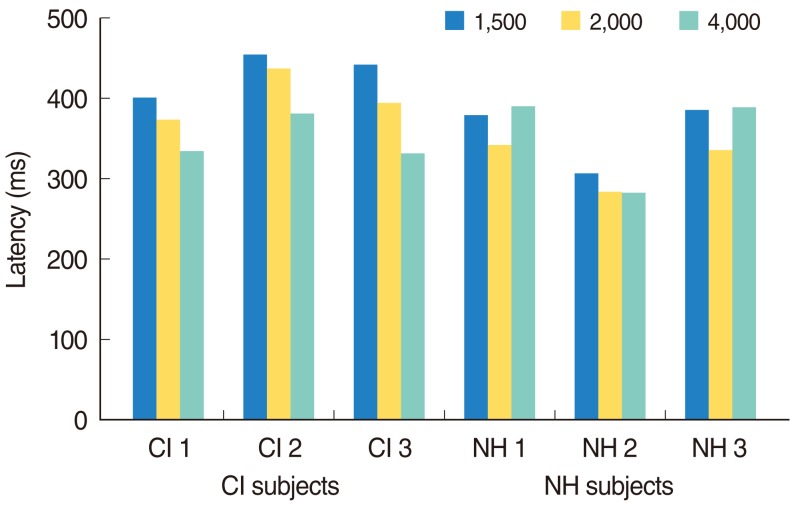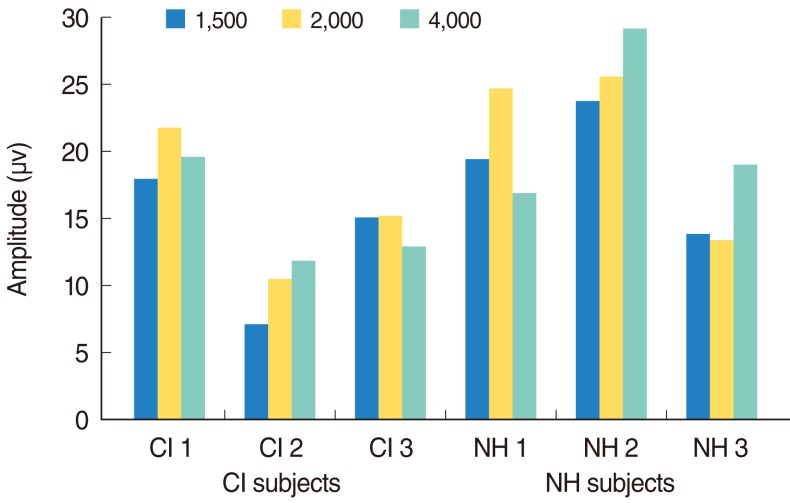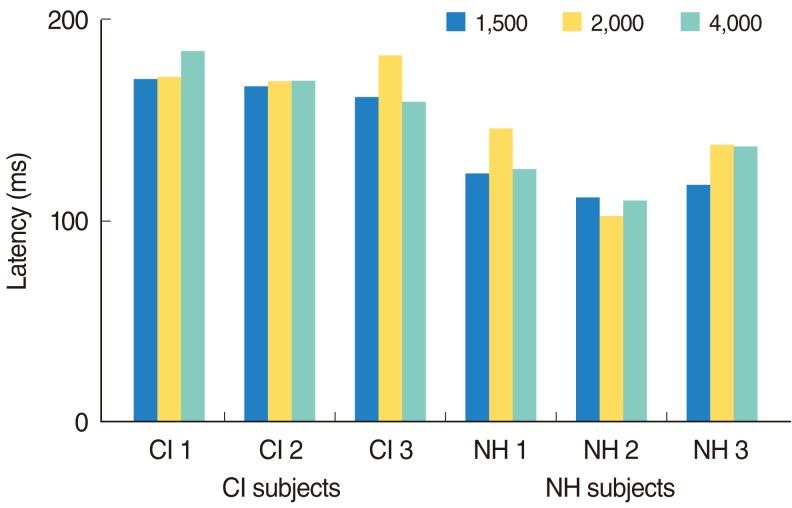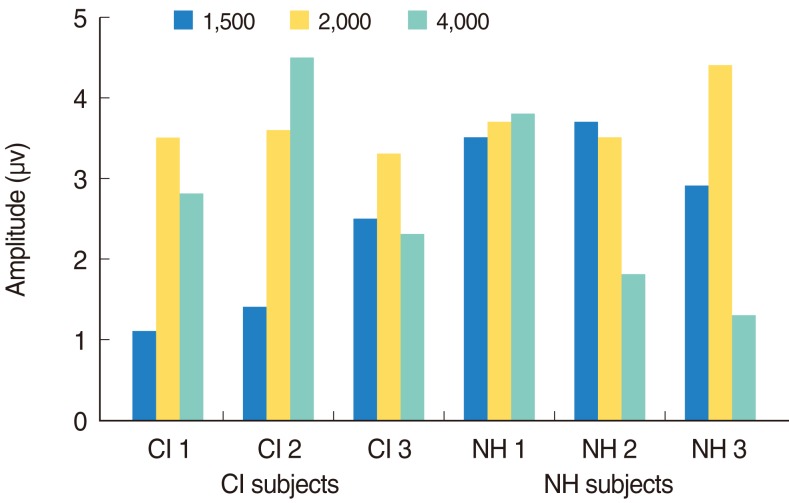Clin Exp Otorhinolaryngol.
2012 Apr;5(Suppl 1):S6-S9.
Auditory Evoked Potentials under Active and Passive Hearing Conditions in Adult Cochlear Implant Users
- Affiliations
-
- 1Department of Speech Language and Hearing Sciences, International University of Health and Welfare, Ohtawara, Japan. cobuchi@iuhw.ac.jp
- 2Department of Comprehensive Human Sciences, University of Tsukuba, Tsukuba, Japan.
Abstract
OBJECTIVES
Speech perception abilities, which vary widely among cochlear implant (CI) users, are considered to be associated with the integrity of the central auditory pathways from the auditory nerve to the cortex. Therefore, auditory evoked potentials (AEPs) are used to evaluate central auditory processing, which is thought to contribute to speech perception in CI subjects. In AEPs, the P300 component reflects the cognitive ability of subjects to detect and respond to stimuli and has most frequently been used and investigated in CI subjects. Other studies have used mismatched negativity (MMN) to examine central auditory processing. It is important to compare MMN and P300 and examine the auditory processing mechanisms involved in these components. Our study therefore aimed to investigate the relationship between P300 and MMN using both active and passive hearing paradigms in CI and normal hearing (NH) subjects.
METHODS
Our subjects consisted of 3 CI subjects and 3 NH subjects. An oddball paradigm was used to deliver the stimuli on both components. The frequent stimuli were 1,000-Hz tone bursts, whereas the rare stimuli were 1,500, 2,000, and 4,000-Hz.
RESULTS
As the frequency contrasts increased, the P3 latencies increased in the CI subjects. However, the latency in NH subjects did not change significantly across the frequency contrast conditions. MMNs were identified for both the CI and NH subjects; the latencies in the CI subjects were longer than those in the NH subjects. However, there were no differences in the latencies of either the CI or NH subjects in the 3 frequency contrast tasks.
CONCLUSION
Our results indicated that different auditory processing pathways are involved in the active and passive hearing conditions based on the P300 and MMN data and that a combination of both responses plays an important role in the comprehension of auditory processing mechanisms in CI subjects.
MeSH Terms
Figure
Reference
-
1. Beynon AJ, Snik AF. Use of the event-related P300 potential in cochlear implant subjects for the study of strategy-dependent speech processing. Int J Audiol. 2004; 12. 43(Suppl 1):S44–S47. PMID: 15732382.2. Oviatt DL, Kileny PR. Auditory event-related potentials elicited from cochlear implant recipients and hearing subjects. Am J Audiol. 1991; 11. 1(1):48–55.
Article3. Kelly AS, Purdy SC, Thorne PR. Electrophysiological and speech perception measures of auditory processing in experienced adult cochlear implant users. Clin Neurophysiol. 2005; 6. 116(6):1235–1246. PMID: 15978485.4. Henkin Y, Tetin-Schneider S, Hildesheimer M, Kishon-Rabin L. Cortical neural activity underlying speech perception in postlingual adult cochlear implant recipients. Audiol Neurootol. 2009; 14(1):39–53. PMID: 18781063.
Article5. Micco AG, Kraus N, Koch DB, McGee TJ, Carrell TD, Sharma A, et al. Speech-evoked cognitive P300 potentials in cochlear implant recipients. Am J Otol. 1995; 7. 16(4):514–520. PMID: 8588653.6. Kileny PR, Boerst A, Zwolan T. Cognitive evoked potentials to speech and tonal stimuli in children with implants. Otolaryngol Head Neck Surg. 1997; 9. 117(3 Pt 1):161–169. PMID: 9334760.
Article7. Zhang F, Hammer T, Banks HL, Benson C, Xiang J, Fu QJ. Mismatch negativity and adaptation measures of the late auditory evoked potential in cochlear implant users. Hear Res. 2011; 5. 275(1-2):17–29. PMID: 21129468.
Article8. Naatanen R, Astikainen P, Ruusuvirta T, Huotilainen M. Automatic auditory intelligence: an expression of the sensory-cognitive core of cognitive processes. Brain Res Rev. 2010; 9. 64(1):123–136. PMID: 20298716.
- Full Text Links
- Actions
-
Cited
- CITED
-
- Close
- Share
- Similar articles
-
- Utility of Electrically Evoked Potentials in Cochlear Implant Users
- Auditory Rehabilitation - Cochlear Implantation
- Noise-Induced Change of Cortical Temporal Processing in Cochlear Implant Users
- Clinical Applications of Intracochlear Electrocochleography in Cochlear Implant Users With Residual Acoustic Hearing
- Recordings of Cortical Auditory Evoked Potentials in Cochlear Implant Listeners: A Preliminary Study





